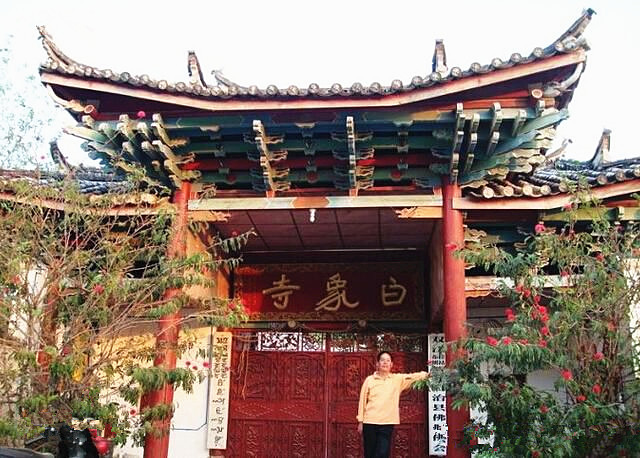
Baixiang Temple in Shuangjiang County, Lincang
Overview
Baixiang Temple (白象寺) is located in Shuangjiang County (双江县), Lincang City (临沧市), Yunnan Province (云南省), China. Originally named Guanmian Temple (官缅寺), it was restored and renamed Baixiang Temple in 1991. The temple’s name is derived from a legend over 520 years old.
Historical Legend
According to the legend, four war elephants, led by a white elephant, rescued part of the defeated Si Army during a crisis involving the Ming Dynasty’s troops. As they fled, they crossed the Lancang River (澜沧江) with the local Dai people, reaching the banks of the Nanwa River (南袜河) where they camped. The four war elephants refused to leave this area, prompting the Si Army and the Dai people to settle there. This place became known as “Yunyang” (允养), now referred to as Mengmeng (勐勐). The name “Mengmeng” is derived from the place where the white elephants found sanctuary.
Getting There
To reach Baixiang Temple, visitors can take a bus or drive from Lincang City. The journey involves traveling along local roads that connect to Shuangjiang County. Taxis are also available for a more convenient travel option.
Travel Tips
- Best Time to Visit: The temple is best visited during the dry season, from late autumn to early spring, for comfortable weather and clear views.
- What to Bring: It’s advisable to bring water, snacks, sunscreen, and a camera to capture the temple’s serene environment.
- Respect Local Customs: When visiting the temple, dress modestly and observe local customs, especially during religious ceremonies.
- Cultural Significance: Take time to learn about the local legends and the temple’s history to fully appreciate its cultural importance.


 7 Days GolfingTour
7 Days GolfingTour
 8 Days Group Tour
8 Days Group Tour
 8 Days Yunnan Tour
8 Days Yunnan Tour
 7 Days Shangri La Hiking
7 Days Shangri La Hiking
 11 Days Yunnan Tour
11 Days Yunnan Tour
 6 Days Yuanyang Terraces
6 Days Yuanyang Terraces
 11 Days Yunnan Tour
11 Days Yunnan Tour
 8 Days South Yunnan
8 Days South Yunnan
 7 Days Tea Tour
7 Days Tea Tour
 8 Days Muslim Tour
8 Days Muslim Tour
 12 Days Self-Driving
12 Days Self-Driving
 4 Days Haba Climbing
4 Days Haba Climbing
 Tiger Leaping Gorge
Tiger Leaping Gorge
 Stone Forest
Stone Forest
 Yunnan-Tibet
Yunnan-Tibet
 Hani Rice Terraces
Hani Rice Terraces
 Kunming
Kunming
 Lijiang
Lijiang
 Shangri-la
Shangri-la
 Dali
Dali
 XishuangBanna
XishuangBanna
 Honghe
Honghe
 Kunming
Kunming
 Lijiang
Lijiang
 Shangri-la
Shangri-la
 Yuanyang Rice Terraces
Yuanyang Rice Terraces
 Nujiang
Nujiang
 XishuangBanna
XishuangBanna
 Spring City Golf
Spring City Golf
 Snow Mountain Golf
Snow Mountain Golf
 Stone Mountain Golf
Stone Mountain Golf


















